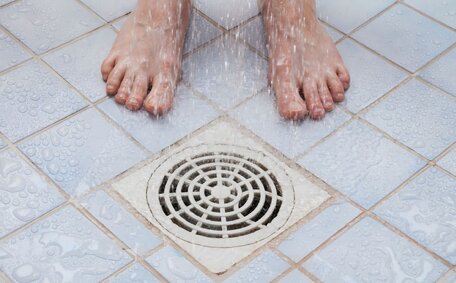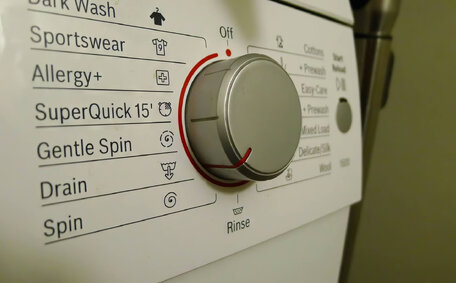
Baking Soda & Vinegar for Cleaning
Using baking soda & vinegar separately for cleaning is very effective; but mixing them dilutes their cleaning power. Learn how to use them properly.
Read MoreTrenchless drain relining, a cutting-edge no-dig technique, repairs underground pipes without the need to excavate. This method applies to sewer lines, stormwater drains, water pipes, and other subterranean utilities.
The outcome is a reinforced drain pipe internally lining the original one.
This method was first developed in the 1980s and has continued gaining popularity due to its cost and time savings over traditional pipe replacement methods. The pipe relining process involves inserting a resin-saturated felt liner into the existing pipe and curing it in place with hot water or steam.
In Australia, trenchless relining is commonly used on residential properties for fixing issues with drains, sewer systems and water pipes. It can also be an excellent solution for commercial buildings with underground pipe networks needing repair or replacement. Compared to digging trenches, it minimises the risk to damage your property and reduces disruption.
For skilled trenchless pipe relining services in Sydney’s Inner West and nearby areas, don’t hesitate to contact Lilyfield Plumbing. We have extensive experience applying this technique to repair damaged pipes affected by root intrusion, corrosion, cracks, collapses and other issues.
Trenchless pipe relining involves inserting a flexible liner made from materials like PVC or epoxy resin into the damaged pipe through an access point such as a manhole or drain. The liner expands to fit snugly against the pipe’s inner walls, ensuring seamless pipe repair.
Once in place, hot water or steam is circulated to cure the resin, thereby securing the liner. This results in a smooth, corrosion-resistant 'pipe-within-a-pipe’ that has significant structural strength and is designed to endure for years.
The existing pipe remains underground and undisturbed while essentially gaining a new functioning interior. The whole process from inspection to completion safeguards your property and is much faster than traditional methods. As per the provided content, trenchless relining can take as little as one day compared to the weeks required to excavate and replace ageing pipes.
Drain pipe relining, by eschewing large-scale excavation, avoids property damage, enhances safety, reduces costs, and minimizes inconvenience to property owners.
The most common materials used in Cured-in-Place Pipe (CIPP) relining are polyester or epoxy resins paired with felt liners. These create a robust, jointless and corrosion-resistant new pipe that can last over 50 years.
Polyester and epoxy resins are favoured for their superior adhesion, mechanical strength, and chemical resistance. These resins saturate felt liners, which can be made from materials like polyester or fibreglass, tailored to fit the original pipe’s configuration.
Additional materials like styrene and silica are often added to the resin mix. Plasticisers provide flexibility while aggregates enhance compressive strength. The resin materials create a smooth, protective barrier able to withstand decades of fluid flows, pressure changes, and root invasion.
Opting for durable epoxy and polyester resin systems, you’ll discover that CIPP relining presents considerable cost advantages over the extensive excavation required for full pipe replacement, making it a premier choice for refurbishing ageing pipe networks with minimal disruption.
The standard steps for trenchless pipe relining are:
Trenchless relining dramatically outpaces traditional techniques in speed. Pipe repairs are often accomplished within a single day, with the curing process taking only a few hours, as opposed to the weeks required for full replacements.
With no need for large excavations, this pipe renovation technique minimises disruption to homes and businesses. Driveways, gardens and walls are left fully intact, without need for disruptive groundwork. Small access pits, necessary only at pipe endpoints, are refilled upon job completion.
Advanced epoxy resins create a robust inner barrier within pipes, meeting today’s hydraulic needs. These CIPP liners boast a life expectancy of over 50 years, supported by comprehensive warranties.
Seamless pipes from drain relining boast high resistance to soil abrasion and root infiltration. Utilising pipe patching methods, owners can prolong the life of older pipes and bypass continual repairs.
Relining pipes, versus complete replacement, is highly cost-effective, reducing concerns over hefty expenses. Due to reduced reliance on excavation and easier installation, costs are around 30% less than traditional pipe replacement expenses.
Post-repair restoration of gardens, driveways, or business properties incurs fewer expenses and causes less disruption, compared to traditional methods.
Trenchless pipe relining is the ideal solution when faced with common residential plumbing issues like:
Relining allows for pipe restoration without the extensive excavation that full pipe replacement demands. This is crucial when needing urgent repairs or pipe renovations under structures like driveways or buildings that are impossible or impractical to demolish.
Precision CCTV inspections single out problem areas where trenchless relining would be effective, forgoing the need for complete replacement. Leveraging the existing pipe as a framework, numerous installations can be completed within one day.
The faultless epoxy or polyester lining effectively addresses issues such as cracks, leaks, and blockages and also prevents future problems thanks to its waterproof barrier that is designed to last for prolonged periods.
Contrary to temporary solutions requiring regular excavations, CIPP relining is a singular measure that provides lasting reliability without harming the property or landscape.
Using baking soda & vinegar separately for cleaning is very effective; but mixing them dilutes their cleaning power. Learn how to use them properly.
Read MoreBlocked drains are usually caused by buildup of hair, grease, debris and more in your pipes. Fix the problem with professional drain unblocking services to get your drains flowing freely again. Contact us for affordable drain unblocking.
Read MoreWhen you suspect a gas leak or damaged gas line, contact a licensed gas fitter immediately to locate and repair it. A gas line repair involves sealing leaks, replacing corroded or damaged pipes and testing all connections for safety before restoring gas supply.
Read MoreLilyfield, 2040 NSW
We will call back as soon as possible.




